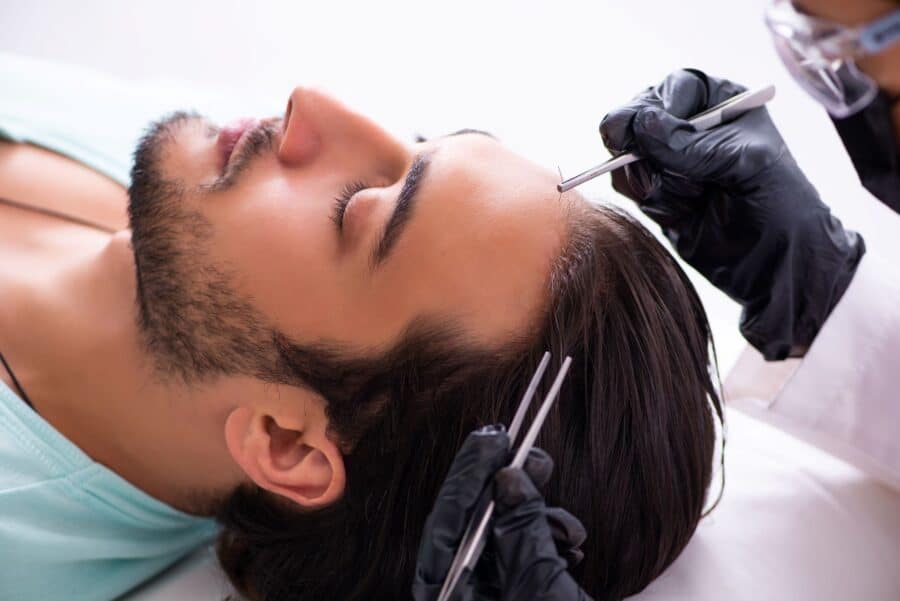Losing hair can be a disheartening experience, particularly for young adults who associate a full head of hair with vitality and attractiveness. Hair loss can significantly impact self-esteem and confidence, making it a distressing issue to deal with. The desire to restore one’s hairline is understandable, but is hair restoration really worth it for young adults?
In this article, you’ll be able to explore the different hair restoration options, along with the considerations to help you make an informed decision.
Understanding Hair Loss in Young Adults
Before exploring the potential worth of hair restoration, you’ll need to understand the underlying causes of hair loss in young adults. While genetics often play a significant role, other factors such as stress, poor diet, hormonal imbalances, and medical conditions can also contribute.
Thus, it’s recommended to consult a trichologist or dermatologist from Vinings Surgery and Hair Restoration Center or any other hair loss treatment center. That way, they can determine the root cause of your situation and guide you accordingly about the best hair restoration options for you.
Exploring Hair Restoration Options
Young adults have a range of hair restoration options to choose from, each with its own benefits and drawbacks. These include:
1. Medications (Finasteride and Minoxidil)
These FDA-approved drugs are commonly used to slow hair loss and promote regrowth. They can block the hormone responsible for hair loss, while Minoxidil enhances blood flow to the scalp. Results can vary, and consistent usage is required to maintain benefits.
2. Low-Level Laser Therapy (LLLT)
For this treatment, it uses red light to produce hair follicles, potentially leading to increased hair growth. It’s a non-invasive option that can be performed at home with specialized devices.
3. Platelet-Rich Plasma (PRP) Therapy
PRP therapy involves injecting the patient’s own platelet-rich plasma into the scalp. It’s believed to stimulate hair follicles and promote hair growth. While some studies suggest positive outcomes, more research is needed to determine its long-term effectiveness.
4. Hair Transplant Surgery
Hair transplant involves moving hair follicles from donor areas to areas with thinning or no hair. It provides more immediate and noticeable results, but it’s also more invasive and costly compared to other options.
Exploring the Benefits of Hair Restoration
Here are some benefits of availing hair restoration for young adults:
Boosted Self-Confidence and Improved Well-Being
Hair restoration procedures may help restore lost hair and improve the appearance of a fuller head of hair. This enhancement in physical appearance often leads to increased self-confidence, positively impacting various aspects of life.
Long-Term Solution
Hair restoration procedures offer a long-term solution for young adults experiencing hair loss. Unlike temporary solutions like wigs or hairpieces, hair restoration aims to address the underlying issue, providing lasting results. With advancements in technology, modern hair restoration techniques ensure natural-looking results with minimal scarring or discomfort.
Natural-Looking Results
With advancements in technology and hair restoration techniques, young adults can achieve natural-looking results. Skilled professionals can blend restored hair with existing hair, providing a seamless and natural look.
Customizable Treatment Options
Hair restoration offers customizable treatment options tailored to individual needs and preferences. Young adults can choose from various hair restoration procedures and select the option that best suits their lifestyle, hair goals, and budget.
Factors To Consider Before Availing Hair Restoration
When evaluating the worth of hair restoration as a young adult, several factors come into play:
Age and Progression of Hair Loss
The age at which hair loss begins and the rate of progression is important. Starting restoration early can lead to better results since it’s easier to work with existing hair and slow down further loss.
Expectations and Realistic Goals
It’s essential to have realistic expectations regarding the outcome of any hair restoration approach. While significant improvements are possible, achieving a full head of hair identical to your teenage years may not be realistic.
Financial Investment
Hair restoration, especially surgical procedures, can be expensive. Check your budget and whether the potential benefits justify the cost.
Maintenance and Commitment
Some options require ongoing maintenance, such as consistent medication use or follow-up treatments. Assess your willingness to commit to these requirements.
Potential Risks and Side Effects
As with any medical procedure, hair restoration has potential risks and side effects. These may include scarring, infection, bleeding, or even unnatural-looking results if not performed by a skilled professional. It is crucial to thoroughly research and consult with a reputable hair restoration specialist before proceeding with any procedure.
The Bottom Line
Overall, the worth of hair restoration for young adults depends on various factors. Before making a decision, consult with a medical professional and consider your age, the severity of your hair loss, your expectations, and your budget. Remember that hair restoration is not a one-size-fits-all solution; what works best for one person may not be ideal for another. Ultimately, the choice should align with your goals and comfort level to enhance your overall well-being and confidence.

Isreal olabanji a dental assistant and public health professionals and has years of experience in assisting the dentist with all sorts of dental issues.
We regularly post timely and trustworthy medical information and news on Fitness, Dental care, Recipes, Child health, obstetrics, and more.
The content is intended to augment, not replace, information provided by your clinician. It is not intended nor implied to be a substitute for professional medical advice. Reading this information does not create or replace a doctor-patient relationship or consultation. If required, please contact your doctor or other health care provider to assist you to interpret any of this information, or in applying the information to your individual needs.


